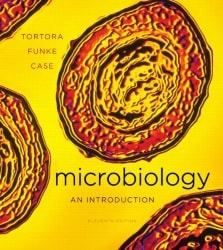How do you know if something is an enzyme?
It ends in -ase.
Metabolic pathways are determined by _______.
Enzymes
Breaks down complex molecules; provides energy and building blocks for anabolism; exergonic.
Catabolism
Uses energy and building blocks to build complex molecules; endergonic.
Anabolism.
In general, _______ pathways generate ATP, whereas _______ pathways expend ATP.
catabolic; anabolic.
Act on specific substrate and lower the activation energy
Enzymes
Substrate contacts the enzyme's active site to form an ____________ complex.
enzyme-substrate
The substrate is transformed and rearranged into _______, which are released from the enzyme.
products.
Are enzymes specific to particular substrates?
Yes.
What is the turnover number (number of substrate molecules an enzyme converts to a product per second)
Generally 1 to 10,000.
What is apoenzyme?
The protein portion of an enzyme.
What is the cofactor?
Nonprotein component
What is the holoenzyme?
The apoenzyme plus cofactor
What are some factors that influence enzyme activity?
Temperature, pH, substrate concentration, inhibitors.
What happens to an enzyme after it is used?
Nothing. The enzyme can repeat the same methods over and over again.
Fills the active site of an enzyme and competes with the substrate
Competitive inhibitor
Interacts with another part of the enzyme rather than the active site
Noncompetitive inhibitor
RNA that functions as a catalyst by cutting and splicing RNA
Ribozymes
During oxidation, is electrons gained or lost?
During reduction, are electrons gained or lost?
Lost
Gained
OILRIG - Oxidation Is Lost, Reduction Is Gained
Electrons are transferred from one electron carrier to another along the what?
Electron transport chain
What is the only place photophosphorylation occurs?
Light-trapping photosynthetic cells
Light energy is converted to ATP when the transfer of electrons (oxidation) from chlorophyll pass through a system of carrier molecules
Photophosphorylation
When is ATP and NADPH produced, cyclic or non-cyclic photophosphorylation?
Non-cyclic.
The oxidation of glucose to pyruvic acid produces ATP and NADH during what?
Glycolysis
How many ATP are using during the beginning stage of Glycolysis?
2 ATP
How many ATP are produced during the energy-conserving stage of glycolysis?
4 ATP; net 2 of ATP.
How much NAD+ is used during glycolysis?
2 NAD+
How much NADH is produced during glycolysis?
2 NADH
ATP-generating process in which molecules are oxidized and the final electron acceptor comes from outside the cell and is (almost always) an inorganic molecule.
Respiration
What are the two types of respiration?
Aerobic and anaerobic.
What is an essential feature of respiration?
The operation of an electron transport chain.
In glycolysis, glucose is broken down into what?
Pyruvic acid
What is produced during the Krebs cycle?
ATP, NADH, and FADH 2.
What are the two most important products obtained during the Krebs cycle?
NADH and FADH 2
How much ATP is generated in anaerobic respiration?
It varies.
How much ATP is produced during aerobic respiration?
As much as 38 ATP per glucose molecule.
Which additional pathway can be taken to get to glycolysis, but does not require glycolysis?
Entner-Dourdoroff pathway
How is energy produced in fermentation?
Glucose is oxidized to form two molecules of pyruvic acid.
Where do chemoheterotrophs get their energy from?
Electrons from hydrogen atoms
Where do photoautotrophs get their energy from?
Light
Where do photoheterotrophs get their energy from?
Light.
Where do chemoautotrophs get their energy from?
Electrons from reduced inorganic compounds
